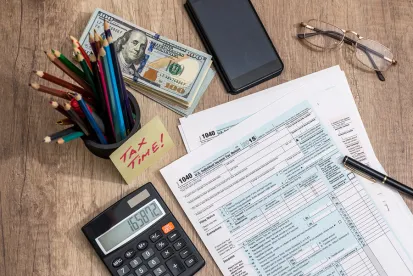Rev. Proc. 2020-23 eases restrictions on partnerships’ ability to file amended tax returns and issue amended Schedules K-1 in order for their partners to avail themselves of the retroactive tax relief provided by the CARES Act. Rev. Proc. 2020-23 applies to taxable years beginning in 2018 and 2019 as long as the originally filed Form 1065 and originally issued Schedules K-1 were filed and issued prior to April 13, 2020.
IN DEPTH
On April 13, 2020, the Internal Revenue Service (IRS) issued Rev. Proc. 2020-23 in response to the Coronavirus Aid, Relief and Economic Security (CARES) Act. Rev. Proc. 2020-23 eases restrictions on partnerships’ ability to file amended tax returns and issue amended Schedules K-1 in order for their partners to avail themselves of the retroactive tax relief provided by the CARES Act.
The CARES Act was enacted on March 27, 2020, and includes numerous tax changes that grant tax relief and provide cash flow and liquidity to businesses, often by providing retroactive tax relief affecting taxable years ending in 2018, 2019 and 2020. A number of CARES Act provisions can provide relief to partnerships, including the relaxation of Internal Revenue Code (IRC) section 163(j) business interest deduction limitations and the correction of the “retail glitch,” allowing restaurants, retail shops and hotels the ability to immediately deduct costs associated with their qualified improvement property. For more information, see our prior summary of the CARES Act.
Under current law, absent the IRS’s guidance, partnerships could have been precluded from filing amended Forms 1065 and issuing amended Schedules K-1 upon which such retroactive relief could be claimed. Instead, partnerships could have been required to file an Administrative Adjustment Request (AAR) pursuant to IRC section 6227, which would have prevented their partners from receiving the retroactive CARES Act benefits until they filed their current year returns. The IRS issued Rev. Proc. 2020-23 to grant partnerships the ability to file amended Forms 1065 and issue amended Schedules K-1 in these circumstances. The IRS also left the door open for partnerships to file amended Forms 1065 and issue amended Schedules K-1 for years beginning in 2018 or 2019 even if they are not claiming CARES Act benefits.
The restriction on partnerships’ ability to file amended Forms 1065 and issue amended Schedules K-1 dates back to the adoption of the new partnership audit rules in the Bipartisan Budget Act of 2015 (BBA). Under IRC section 6031(b), partnerships are allowed to issue amended Schedule K-1s to their partners only under the following circumstances:
-
The partnership has opted out of the BBA partnership audit rules for the taxable year under IRC section 6221(b) (not available for partnerships with more than 100 partners or partners that are pass-throughs).
-
The partnership is required to make a payment to the IRS in connection with an audit and chooses to shift the responsibility for making the payment to its partners by (i) making a “push out” election (under IRC section 6226); (ii) having the partners file amended Form 1065s (under IRC section 6225(c)(A)); or (iii) having the partners use the “alternative” (also known as “pull-in”) procedure by filing Form 8982 (under IRC section 6225(c)(2)(B)).
-
As otherwise provided by the IRS or the US Department of the Treasury.
While Rev. Proc. 2020-23 is the first time that the IRS has exercised its authority to allow partnerships subject to the BBA partnership audit rules to file amended Forms 1065 and issue amended Schedules K-1, the IRS provided similar relief in 2019 with respect to “superseding” tax returns, i.e., tax returns filed after the filing of a first tax return and before the deadline for filing the return, that are treated as replacing the first filed return. If a partnership requests an extension to file its Form 1065, it has until the extended deadline to file a superseding Form 1065, but if it files its Form 1065 by the original deadline and does not request an extension, a second Form 1065 filed between the original deadline and the extended deadline would be treated as an amended return barred by IRC section 6031(b). Rev. Proc. 2019-32 alleviates this problem by treating partnerships in such circumstances as if they had filed for an extension, allowing the second Form 1065 to be treated as a superseding tax return. Rev. Proc. 2019-32 could be helpful to some partnerships in claiming retroactive CARES Act benefits, but it clearly would not help with respect to tax years beginning in 2018, where the extended deadline for filing has long since passed. Rev. Proc. 2020-23 fills in that gap.
Rev. Proc. 2020-23 applies to taxable years beginning in 2018 and 2019 as long as the originally filed Form 1065 and originally issued Schedules K-1 were filed and issued prior to the April 13, 2020, issuance date of Rev. Proc. 2020-23.
To take advantage of the option to file an amended return pursuant to Rev. Proc. 2020-23, an eligible partnership must file (either electronically or by mail) a Form 1065 (with the “Amended Return” box checked), along with the amended Schedules K-1, and must write “FILED PURSUANT TO REV PROC 2020‑23″ at the top of the amended Form 1065. The partnership must also attach a statement with each Schedule K-1 sent to its partners with the same notation.
If the partnership year to which the amended return relates is already under IRS examination, the partnership is required to provide the examination agent with written notice of its decision to amend along with a copy of the amended return. Rev. Proc. 2020-23 also provides rules for dealing with partnerships that have already filed AARs or have elected under Notice 2019-46 to apply the rules of the proposed GILTI regulations in Treas. Reg. § 1.951A-5.
Practice Point: The IRS is trying to make the benefits of the CARES Act legislation uniformly available to all taxpayers, regardless of the form of the entity. Rev. Proc. 2020-23 helps taxpayers that operate as a partnership to file amended tax returns and issue amended Schedules K-1 so that partners can benefit from Congress’s attempt to pump liquidity into the economy in the face of the devastating effects of the COVID-19 pandemic.





 />i
/>i

